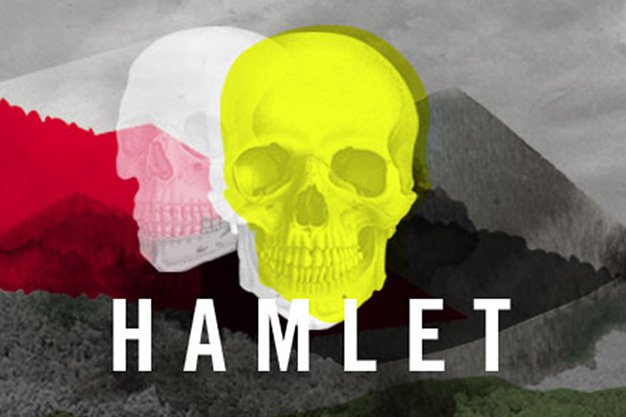“Madness in great ones must not unwatched go”
A review of Hart House Theatre’s Hamlet
“The play’s the thing,” goes the famous line, and these words have proven true after bearing witness to the brilliant revival of Hamlet at U of T’s own Hart House Theatre. Paolo Santatlucia takes the Bard’s most indispensable work and gives it modern day relevance by weaving together the old and the new.
Before the audience walks in, the play has already begun. Francisco, a guard, sits at attention on his watch duty, setting the scene for the act that’s to come. The audience’s attention is swiftly drawn to the charming and bespectacled Horatio, played by Eric Finlayson, whose method of physical acting compliments the calculating nature of Hamlet’s best friend. Tribute must also be paid to Annemieke Wade and Sheelagh Daly, respectively playing Gertrude and Ophelia, for commanding a strong female presence in an otherwise male dominated play. Both Wade and Daly were able to find the right balance between the boldness and vulnerability that is defining of both the scandalous queen and the prince’s suicidal mistress. However, it is Dan Mousseau’s debut performance for Hart House Theatre as Hamlet that takes the cake. Mousseau is a marvellous performer to watch, articulating the words of the Danish prince as if they were his own. His ability to switch on a manic persona so characteristic of Hamlet is striking, captivating our interest from his first “to be or not to be” until his final breath in the fifth act. Mousseau’s Hamlet is a nuisance to his friends and family, taunting and teasing them physically and verbally, yet leading the audience to love him all the more for it. His allure is electric and the moment the prince returns to the stage, all eyes are on him.
Santatlucia melds the vibe of centuries past we are accustomed to seeing in Shakespearian plays with an undefinable contemporary setting, allowing him to pull elements from both eras as he sees fit. By the characters’ costumes, the audience immediately understands the next three hours are not going to be set in medieval Denmark, though the exact timeframe remains ambiguous for the rest of the play. The static jazz music playing over the radio at first is reminiscent of the “Golden Era” of the 50s and 60s, but that allusion is shattered when Hamlet strolls on stage to meet Polonius carrying his iPad.
We could then find ourselves wondering: if the Danish prince carries a tablet with him, why did the news of Rosencrantz and Guildenstern’s death arrive by letter? Couldn’t someone have forwarded Horatio the death announcement?
My response to this quandary is that we are simply not ready for a texting Hamlet. Technology is the child of a faster, more impatient era, and time in Hamlet is crucial. Hamlet is Shakespeare’s longest play, and I argue that this is because he uses this time to fully develop the character of Hamlet, and craft him into this mad, selfish, yet undeniably relatable prince. This is a character that simply couldn’t be done in any less time. The director understands that if Hamlet had an iPhone, the agony of his lengthy self-torture would significantly be reduced, and the play would flop. The ambiguity Santatlucia brings to this production lends itself to present-day pertinence without compromising the hours of self-loathing indulged in by our favourite Dane.
